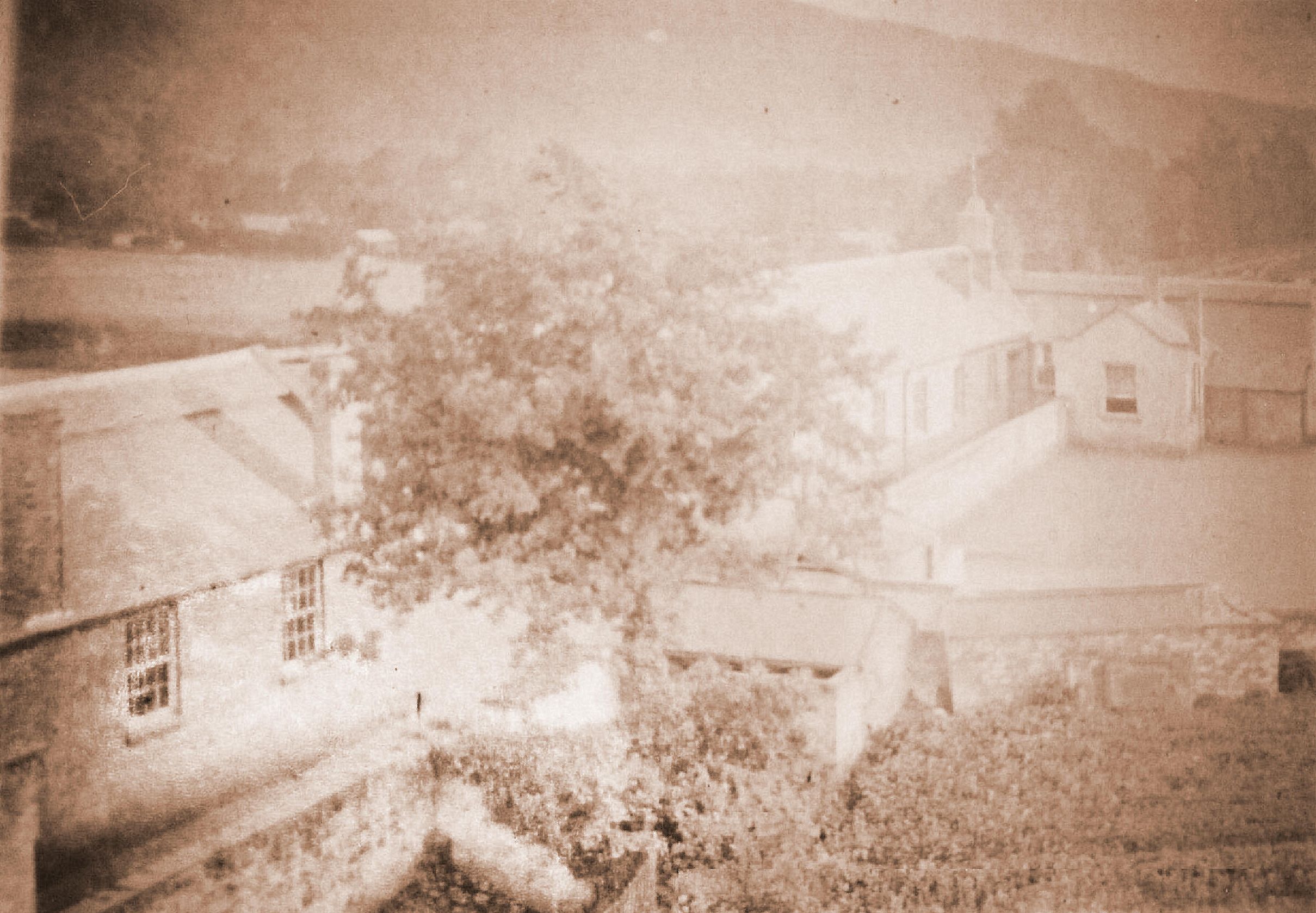Ystalyfera
History and Heritage
Wern School, Ystalyfera
ORIGINAL WERN SCHOOL
The original Wern School began at Wern House [hence its name] and was located on Deeley Road, which is now the lowest part of Ystalyfera on the Northern side of the bypass, accessed by going up the hill, over the bridge, and then turning left by the Corner House.
OVERVIEW BY VAL TREVALLION
As well as Pantteg School, Ystalyfera has lost the old Wern Elementary and Infants' Schools which were built near the railway and canal along Deeley Road. James Palmer Budd promoted the building of the school and his wife Emily also took a keen interest, her activities in education, social service and in the church were invaluable. She took a particularly keen interest in the education of girls and personally supervised the sewing classes.
For many years she acted as organizer of a clothing club, ordering the best material at the lowest prices and provided food and clothing for many women who struggled with a houseful of children.
An advertisement appeared in the Cambrian Newspaper dated 8th March 1850 under SCHOOL MISTRESS WANTED:
Wanted: for the Girls school at Ystalyfera; a mistress competent to teach English, Spelling and Reading, Writing and Arithmetic. She must be a good needle woman and able to lead the children in singing. It is also essential that she should have a sufficient knowledge of Welsh, to communicate with children ignorant of English.
Applications with testimonials: to be made by letters only to Mrs. Palmer Budd, Ynisdaren Swansea. 06/03/1850
When I began researching the life of James Palmer Budd, a very elderly gentlemen from Pontardawe gave me his only known photograph of the old Wern Schools. These buildings were replaced by the much larger Wern Schools built on Clare Road up on Alltygrug Hill, the foundation stone being laid on a Thursday, 3rd September 1903 by Mr. James Williams, the chairman of the School Board.

The Old Wern School, Ystalyfera
History of Elementary Education
From Ystalyfera Memories by Bernant Hughes
1842 A school was starts at Wern House and maintained by a levy of 1d per head. This was a National (Church) School.
1863 The first recorded log book of Y Wern School
1873 Mr James Williams was appointed Head teacher of Y Wern Boys School
1881 The Wern School came under the administration of the Llangiwc School Board
EARLY ELEMENTARY EDUCATION IN YSTALYFERA
The first elementary school to be built in Ystalyfera was a National School. It was situated on the present side of Deeley Road. It was an L-shaped building, with a shorter protruding part leading onto the side of Wern Villas. The school depended upon the contributions of the children, normally one penny per head. Nonconformists were loathed to send their children to this school because they were subjected to the teachings of the Church of England. There were other minor independent schools in the vicinity at this time.
Education was not compulsory yet, and many children did not attend regularly and they often change schools as their personal whims dictated. If they were dissatisfied with a particular school they could go to the Wern, Pantteg or Godre'rgraig Schools. Many parents thought that the main responsibility of their offspring was to find work, so that their wages could help make both ends meet, which was a constant struggle in those days of dire poverty.
THE FIRST WERN SCHOOL
A report issued 25th February 1863 states: "the schoolroom is about to be enlarged and the classroom added; these alterations are necessary owing to the increased attendance. The discipline and instruction are good and a general improvement is observable both in the mode in which daily work is carried on and in the order and intelligence of the scholars."
The staff of the school consisted of Robert Lloyd master; Watkin Morgan Jones pupil teacher fourth year; James Williams pupil teacher third year; William Biggin pupil teacher second year.
The pattern of the school year with vastly different from that which we have today. The school year commenced in February and was divided into four quarters. The holiday periods were as follows - a week's holiday at Easter time; a month's break from the end of June to the end of July; another week off in October; and the school closed for a fortnight at Christmas time.
During the winter period, evening classes were held four times a week. The headmaster found this rather exhausting nevertheless he complained bitterly on those occasions when the attendance lapse alarmingly and he even suggested that attendance at evening classes should be made compulsory
THE CATCHMENT AREA
Then pupils on roll the Boys School from 1863-1880 varied from 90 to 200. The catchment area was mainly from the village example Alltygrug, Gough Road, Llwyncelyn, Vine Inn, Lamb Inn, Gay, Near post office, Wern, Gurnos, near Soar Chapel, Ystalyfera Arms, Fountain Hall, Graig Awr and Craig y Fforest but some pupils from Cwmtwrch attended the school as well: the distance which some of these children lived from the school, accounted for a great number of absences, especially during the rainy seasons. This, unfortunately, was not the only reason for absenting themselves from school, as the school log shows
"This being the season for gardening, the children are kept at home to assist their parents" or "the potato trouble is coming! The children are kept at home to set their gardens" even "children absent picking blackberries" and "a lot of illness in the village and many of the children who are well are kept at home to assist their mothers" but "small attendance today -Fair at Ystradgynlais" or "attendance more an account of Dog and Monkey Show. Several played truant."
Attempts were made to encourage good attendance. Sometimes bribery and corruption were used and the Headmaster offered a prize to any child who would be present at the school for a whole month without losing a single session.
THE SCHOOL'S CURRICULUM
The pupils were instructed in the basic subjects and many of the terms used in mathematics would be unfamiliar in this technological age, such as Square and Long Measurement, Practice, Proportion and Mensuration. Most of this work was done on slate. The normal way to remove the chalk marks was by pressing on the slate and rubbing furiously with one's shirt sleeve! Very little work was done on paper, although one could see an occasional reference to "paperwork".
THE VISIT OF THE SCHOOL INSPECTOR
The highlight of the academic years was the annual visit of Her Majesty's Inspectors. Not only were the children examined but it was a terrifying ordeal for the teachers as well. The news of an impending visit gave rise to a greatly increased activity on the part of both and pupils. Sawdust would be scattered over the floors, flowers displayed on the window sills, everyone would be dressed in his best clothes and the cane hidden discreetly out of sight!
THE HEAD TEACHERS
The first known Headmaster of the school was Mr Robert Lloyd.
His successor, Mr James Williams, took charge of the school in 1873. He was only 27 years of age when appointed. He remained in his post till 1913, which means that he was Headmaster for 40 years, a record which can never be surpassed in the history of the school.
The members of the teaching staff at that time were Illtyd Rosser, William Davies, Evan Rees and Thomas Davies.
It was during Mr Williams' first years at the school that the "Whipper-in" was introduced into the education system. This meant that the number of truancy cases decreased considerably.
From 1881 however, the school would no longer be governed by the Church authorities; it would now come under the management of the Llangiwc School Board. Even though the School Board was set up in 1870, it was not until 1881 that the Wern Schools were changed from National to Board (Council) School.
Ystalyfera - South Wales
History Articles

Ystalyfera Schools
- Ystalyfera County School
- Wern School
- - Original Wern School
- - Modern Wern School
- - James Williams, Headmaster of Wern School
- Pantteg School
- Godrergraig School
History Articles
- Eyesores of Ystalyfera
- Blooming Ystalyfera
- Lost Landmarks of Ystalyfera
- Ystalyfera Then and Now
- Our Feathered Friends
- Ystalyfera Swimming Pool
- Pantteg Murder
- British Legion, Ystalyfera
- Bronchitis Valley
- Ystalyfera Cemeteries
- Storm Damage
- Cemetery Damage
- A Sacred Promise
- Historian Noel Watkins
- Yan Boogie - Eileen Baker
- Dangerous Bridges
- Interesting Snippets
- Jewish Cemetery, Swansea
Email Yeargroup:
yeargroup@hotmail.co.uk
Email Wolfian Design:
webdesign@wolfianpress.com














